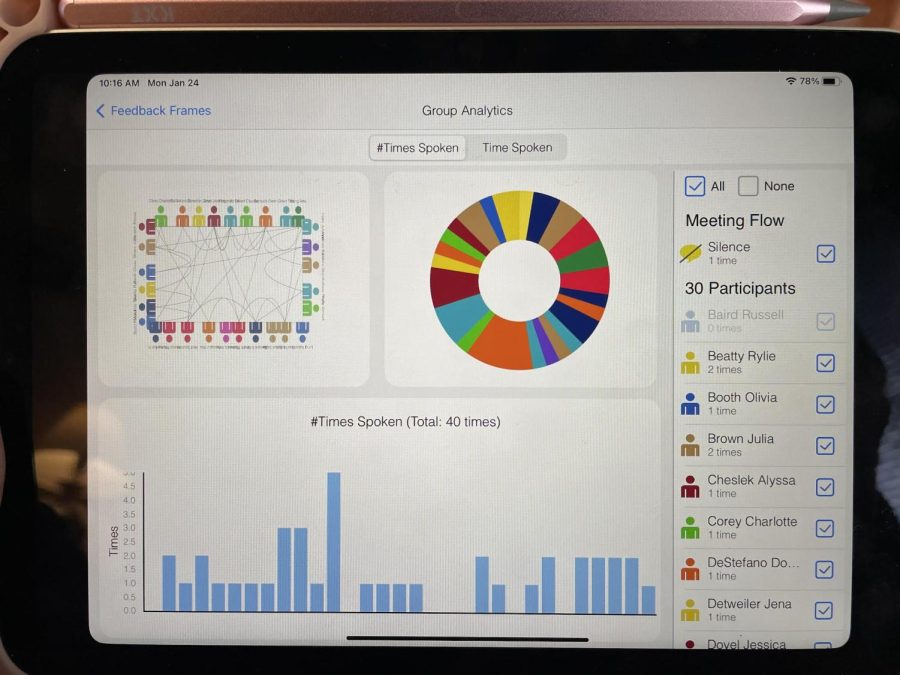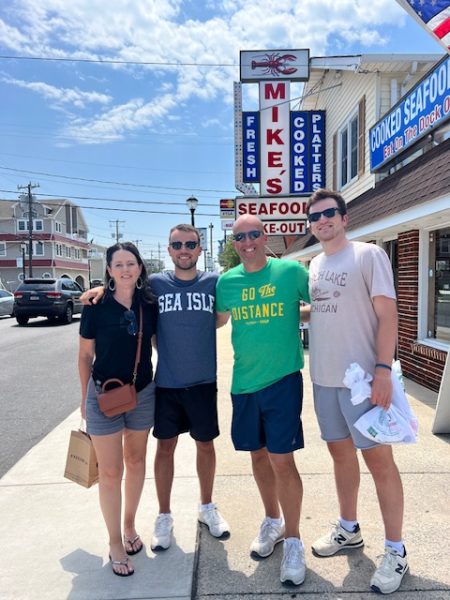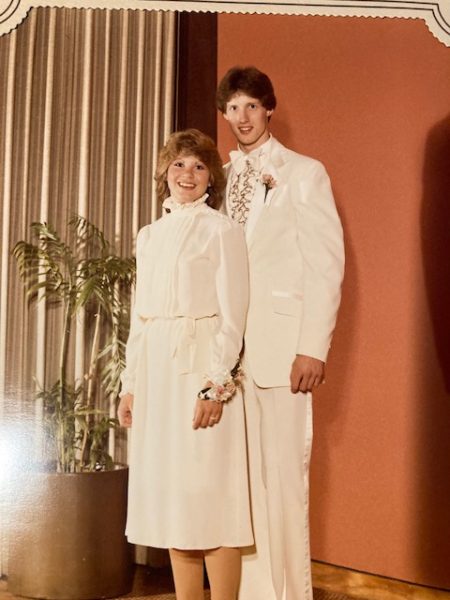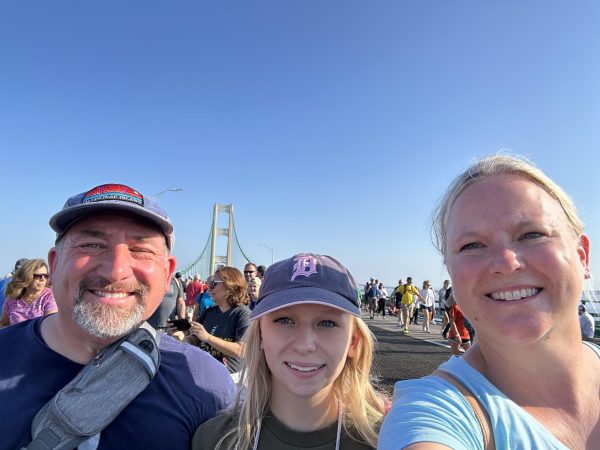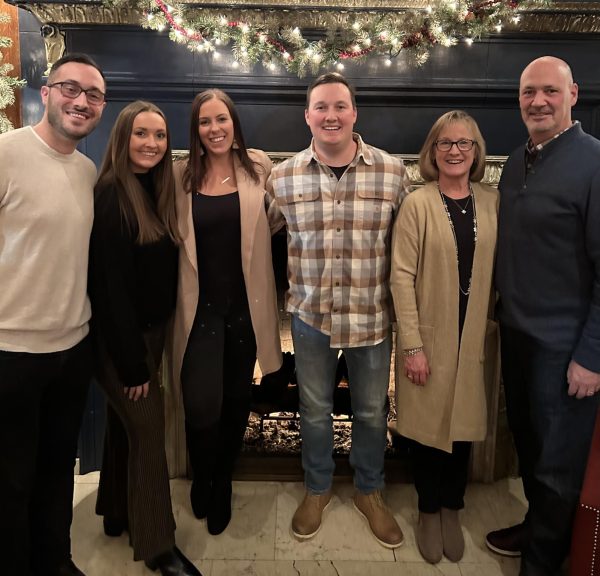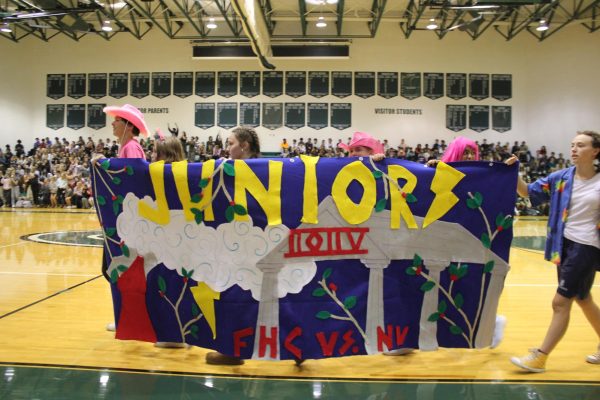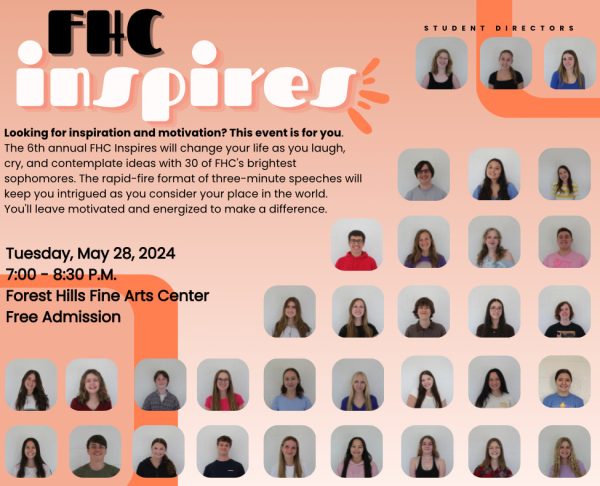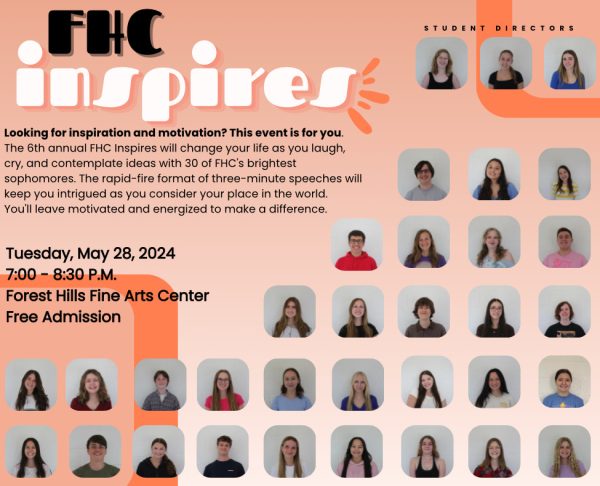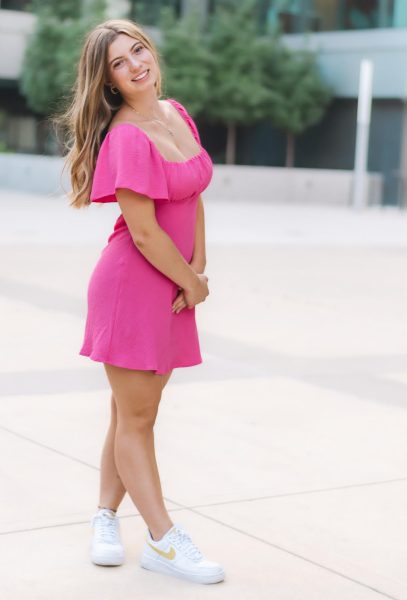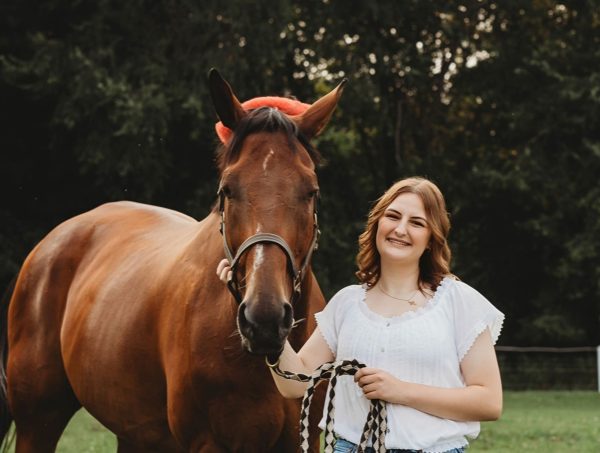Teachers provide new opportunities for students by applying for grants
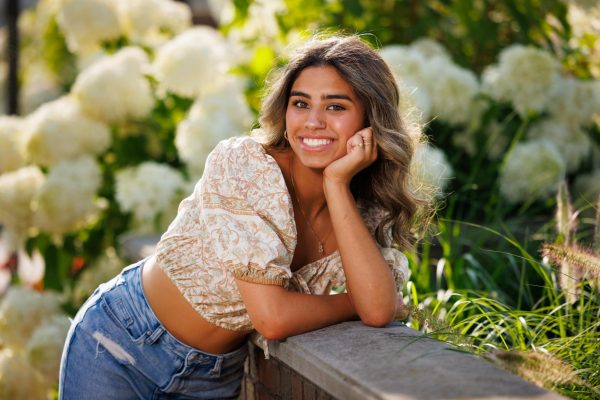
More stories from Sofia Hargis-Acevedo
A picture of Penninga’s new iPad Mini using the Socratic Method software.
As an AP Lang and AP Lit teacher, Lisa Penninga likes to have Socratic Seminar sessions with her students to discuss as a class.
In using the Socratic method, Penninga has her students ask and answer questions to encourage critical thinking about the topic at hand. To keep track of who is talking and what they say, Penninga creates an intricate web. However, this task can be very time-consuming for her, and she does not feel as attentive as she would like to be in the conversation.
To fix her problem, Penninga applied for a grant to purchase an iPad Mini. There is an application on the iPad that records the conversation and creates the web for her while saving data from other hours.
“I feel like half the time, I’m frantically writing something down,” Penninga said, “and [the iPad Mini] keeps all the analytics for me, and then I can reuse it. Now, next time when I want to go to third hour, I can just pull that up again.”
Prior to applying for the iPad Mini grant, Penninga had also applied for two others and was able to receive them. She applied for the James Patterson grant through Scholastic and was gifted $500 to spend on books.
Along with that, she also applied for a grant through the Forest Hills Educational Foundation. This one gave her twice the amount of money to pay for books for her classroom, cashing in at $1000. Because of those, Penninga was able to further expand her class library.
“[Receiving those grants] was really exciting too,” Penninga said. “A lot of the books in my library came from those grants.”
Penninga was very grateful for receiving the grant for the iPad Mini. She is thrilled to see how she can incorporate it into her lesson plans in the future to make learning in her classroom more interactive.
“I’m really excited to see the Socratic Seminar sessions [with the new iPad Mini],” Penninga said. “I just got it a week ago, so we haven’t had one yet, but I think it’ll be really fun to see. Students could even do it too, where they can help me out with that. Once COVID-19 chills out a little bit, I would love to be able to have it go from station to station.”
Like Penninga, science teacher Joey Spadafore would also like to increase the amount of hands-on learning he does in his classes. Though he has yet to actually apply for this grant, he is very enthusiastic about it.
I feel like the foundation wants to help teachers do something new and novel.
— Patti Richardson
While teaching a Geology lesson about rivers and streams, Spadafore has these small tables for his students to use. He wants to receive a grant to purchase newer ones with more enhanced technology to better simulate the bodies of water. However, the tables can cost up to $12,000, so it would take a grandiose amount of persuasion to receive the funds.
“[The stream tables are] obviously something that you can’t just go out and buy,” Spadafore said. “It would take a grant. I would have to talk about [things such as], ‘Why would the table be important? Why would it be beneficial? How could we continue to keep learning with it?’”
Though many would perceive the tables would only be used by the Geology class, Spadafore does not see this as the case. There will be a new Environmental Science class that he will be teaching to the upcoming juniors, and he believes that it would also be very beneficial in the class.
Much like Penninga’s AP Lit class, Spadafore believes that hands-on learning is a paramount aspect of teaching, especially in a science class. By receiving the money for the stream table, he believes that he can scale up the quality of the teaching method with better-quality technology.
“I try to do [hands-on learning] as much as I can in Geology,” Spadafore said. “I feel like I could make it even better—do even more if I have [the stream tables].”
Unlike Spadafore, science teacher Patti Richardson has applied to multiple grants in the past. Many of the materials in her classroom are grants such as her whiteboards, PCR machines, model kits, and ElectroPhoresis equipment.
Having applied to a plethora of grants during her time as a teacher through the Forest Hills Educational Foundation, she has become quite an expert in the process and believes that it is an opportunity that no teacher should pass up.
“I feel like the foundation wants to help teachers do something new and novel,” Richardson said. “As teachers, a lot of times we complain about not having money to do X, Y, or Z, and the foundation’s there to help us. So, if you have an idea of something to do, it’s worth doing.”
To apply for a grant, Richardson explains that applying for grants through the foundation is not difficult. Teachers have to first research the product they would like to purchase—how much it costs, what it would be used for, etc.—and then fill out an application. In the application, they would justify why they want to purchase the product and how it would impact students.
There is a spring cycle and fall cycle when it comes to applying for grants. The spring cycle has just begun, and after teachers turn in their applications, it takes about two weeks to find out if they were given the funds or not.
Richardson is forever thankful for the opportunity to be able to apply for grants and does not think it should ever be taken for granted.
“[Applying for grants is] something that I really appreciate that the foundation has been able to do,” Richardson said. “It’s allowed me to do new stuff with my students that I think has improved their learning way more than if I wasn’t able to get it.”

Sofia is a senior entering her fourth and final year writing for The Central Trend. She has grown up a writer and cannot picture herself as anything but....





















































































